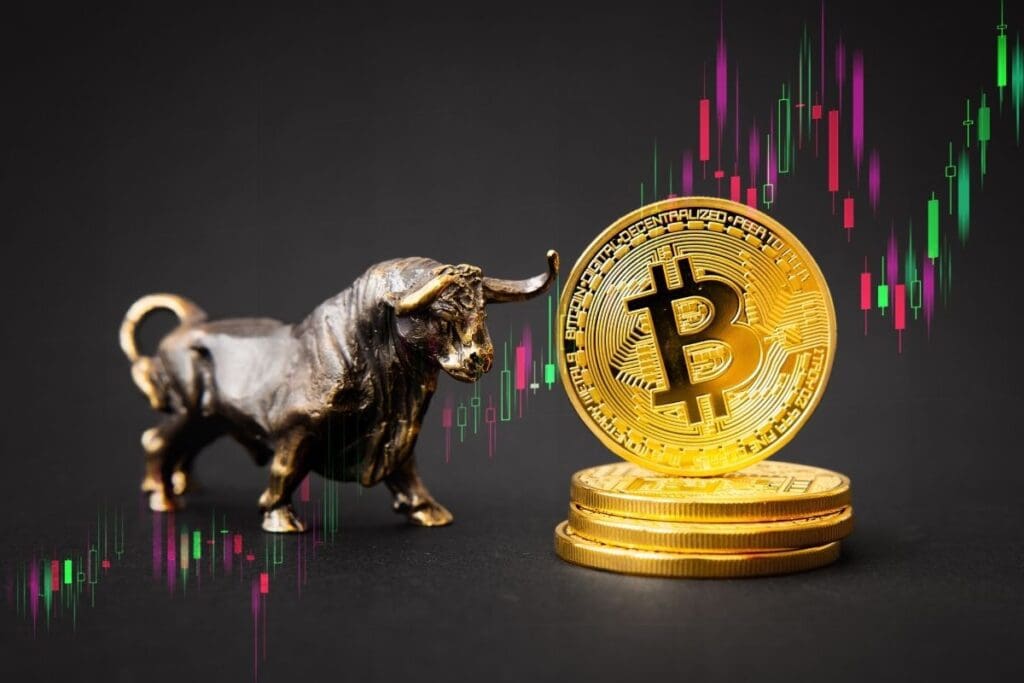Understanding the Cryptocurrency Bull Season: A Path to Wealth

In the financial sector, the terms “bear season” and “bull season” are commonly used to describe the trends in asset prices. A bear season indicates a period where prices are generally falling, reflecting a pessimistic or negative outlook among investors. Conversely, a bull season signifies a time when prices are on the rise, indicating a more optimistic or positive market sentiment.
Cryptocurrency markets are particularly known for their high volatility and significant price fluctuations. As such, when a new bull season begins in the cryptocurrency sphere, it often leads to a sharp increase in the prices of almost all cryptocurrencies in the market. This can result in substantial gains for investors who hold these digital assets. However, given the inherent volatility, these markets also pose considerable risks.
What is a bull season when cryptocurrencies increase hundreds of times?

In the financial sector, terms like “bear season” and “bull season” are commonly used to depict trends in asset prices. A bear season indicates a period of declining prices, reflecting a pessimistic or negative sentiment among investors. Conversely, a bull season denotes a period of rising prices, signaling optimism or positive market sentiment.
Cryptocurrency markets, known for their high volatility and significant price swings, often experience sharp increases in prices across various cryptocurrencies at the onset of a new bull season. This surge can lead to substantial gains for investors holding these digital assets. However, due to the inherent volatility, these markets also carry significant risks.
What is Bitcoin halving, one of the biggest causes of cryptocurrency bull seasons?

One of the most significant events in the realm of Bitcoin and blockchain technology is the Bitcoin halving, a process that takes place approximately every four years. This event, ingrained into Bitcoin’s source code by its enigmatic creator, Satoshi Nakamoto, serves a fundamental purpose.
The core rationale behind Satoshi’s implementation of the halving mechanism is clear: it aims to decrease the rate at which new Bitcoins are generated, thereby reducing Bitcoin’s inflation rate. This strategic move is intended to stimulate an upward trajectory in Bitcoin’s value over time.
According to Bitcoin’s protocol, the final Bitcoin is anticipated to be mined around the year 2140. Once this milestone is reached, no additional Bitcoins will enter circulation.
During a Bitcoin halving event, the rewards granted to miners for validating transactions are halved, resulting in a reduction in the rate of Bitcoin creation. The most recent halving event took place in 2020, cutting the mining reward from 12.5 to 6.25 Bitcoins per block. Following this event, Bitcoin’s market value surged to an all-time high of $69,000 in 2021.
Predictions on when the big crypto surge that is expected to make many people rich could happen:

The exact catalyst for the next cryptocurrency bull run remains uncertain. While many anticipate that the Bitcoin halving event could serve as a prime trigger, other unforeseen events could also initiate the upward trend.
Will the Bitcoin halving event, which previously triggered sharp rises, start the new bull?

The next Bitcoin halving event is expected to take place around mid-2024. At this time, Bitcoin mining rewards will decrease to 3.125 Bitcoins.
Traditionally, Bitcoin’s price has exhibited a pattern of increasing in a four-year cycle surrounding these halving events. These cycles often entail a notable decrease in prices, a phase of consolidation, and then a substantial price surge leading up to the halving event.
The price of Bitcoin has generally risen to record highs 1 year after the halving event.

It’s important to recognize that past trends are not indicative of future performance in the cryptocurrency market. However, as of now, Bitcoin’s price is approaching $69,000, resembling the pattern seen during its previous bull market when it reached its all-time high (ATH).
In line with this observation, Binance CEO Changpeng Zhao commented a few months ago, stating, “The year following the Bitcoin halving typically experiences a bullish trend.” This statement reflects an optimistic perspective, considering the historical impact of the halving event on shaping market sentiments and trends.
The claim that the new bull could start with even grocery stores accepting cryptocurrency payments:

The widespread adoption of cryptocurrency payments could indeed serve as a catalyst for the next cryptocurrency bull run. Imagine a future where grocery stores, supermarkets, hotels, and various businesses announce their acceptance of cryptocurrency payments – such a shift could signal the onset of a new bull market.
In such a scenario, the demand for cryptocurrencies would likely surge as more people seek to engage in transactions using digital assets. However, it’s important to acknowledge that this vision remains speculative at present. Achieving widespread adoption of cryptocurrency payments may take another 10-12 years or more. Only time will tell.
Could the bull start with laws such as taxes coming to the cryptocurrency markets?

Governments worldwide have yet to fully regulate cryptocurrency markets, and the enactment of laws regarding cryptocurrencies reflects a country’s acknowledgment of these digital assets as legitimate forms of currency.
In this context, two possible outcomes can be anticipated. A favorable legal framework could lead to a significant increase in cryptocurrency values. Conversely, negative regulations or strict taxation policies could result in price decreases or stabilization.
Recently, the European Union has made significant strides in cryptocurrency legislation with the introduction of the Markets in Crypto-Assets (MiCA) regulation. Meanwhile, the United States is actively engaged in conducting comprehensive research into cryptocurrencies.
One of the strongest claims: What is Bitcoin ETF approval?

The concept of ETFs, or Exchange-Traded Funds, holds significant importance in the context of Bitcoin. The introduction of a Bitcoin ETF would provide investors of all types with easier access to buying and selling Bitcoin, without being exposed to major risks such as cryptocurrency exchange crashes.
If the U.S. Securities and Exchange Commission (SEC) were to approve a Bitcoin ETF, an event expected by 2024 at the latest, Bitcoin could suddenly become a highly sought-after asset.
Recent increases in Bitcoin’s price, combined with the impending Bitcoin halving event, suggest the possibility of a new cryptocurrency bull run emerging in 2024. Other factors, such as the legalization and global adoption of cryptocurrencies, as well as the growing interest of institutional companies in cryptocurrency investments, could also contribute to triggering a new cryptocurrency bull run. However, the most crucial event to monitor at this time is the upcoming Bitcoin halving.
It’s important to note that this content should not be interpreted as investment advice.
You may also like this content
- The End of Chatbots: Why 2026 is the Year of AI Agents (And What It Means for Your Job)
- Would You Choose a Robot Body or a Digital Mind?
- Nano Banana Pro: Free 4K Photo Upscaling Tool
Follow us on TWITTER (X) and be instantly informed about the latest developments…











